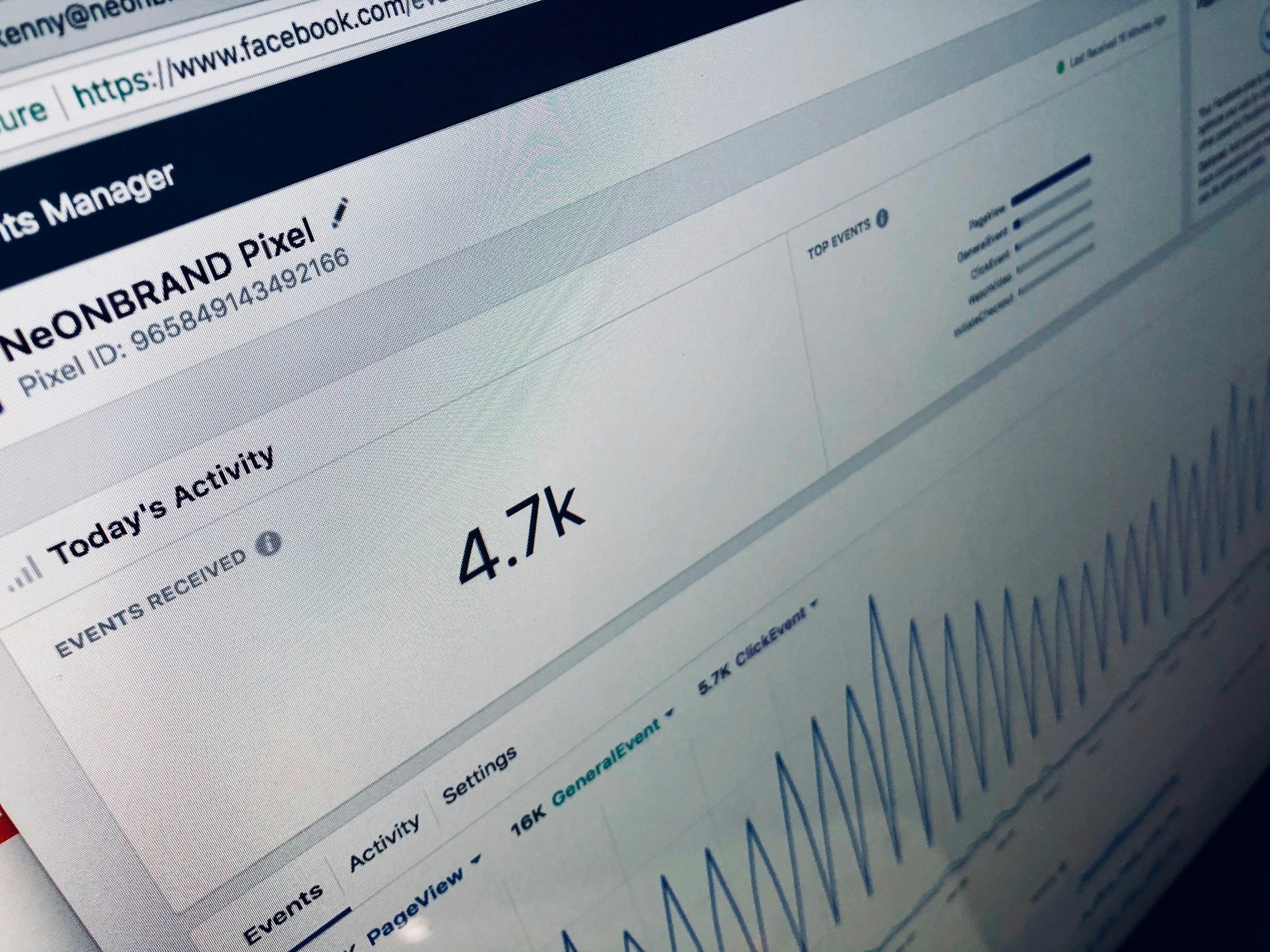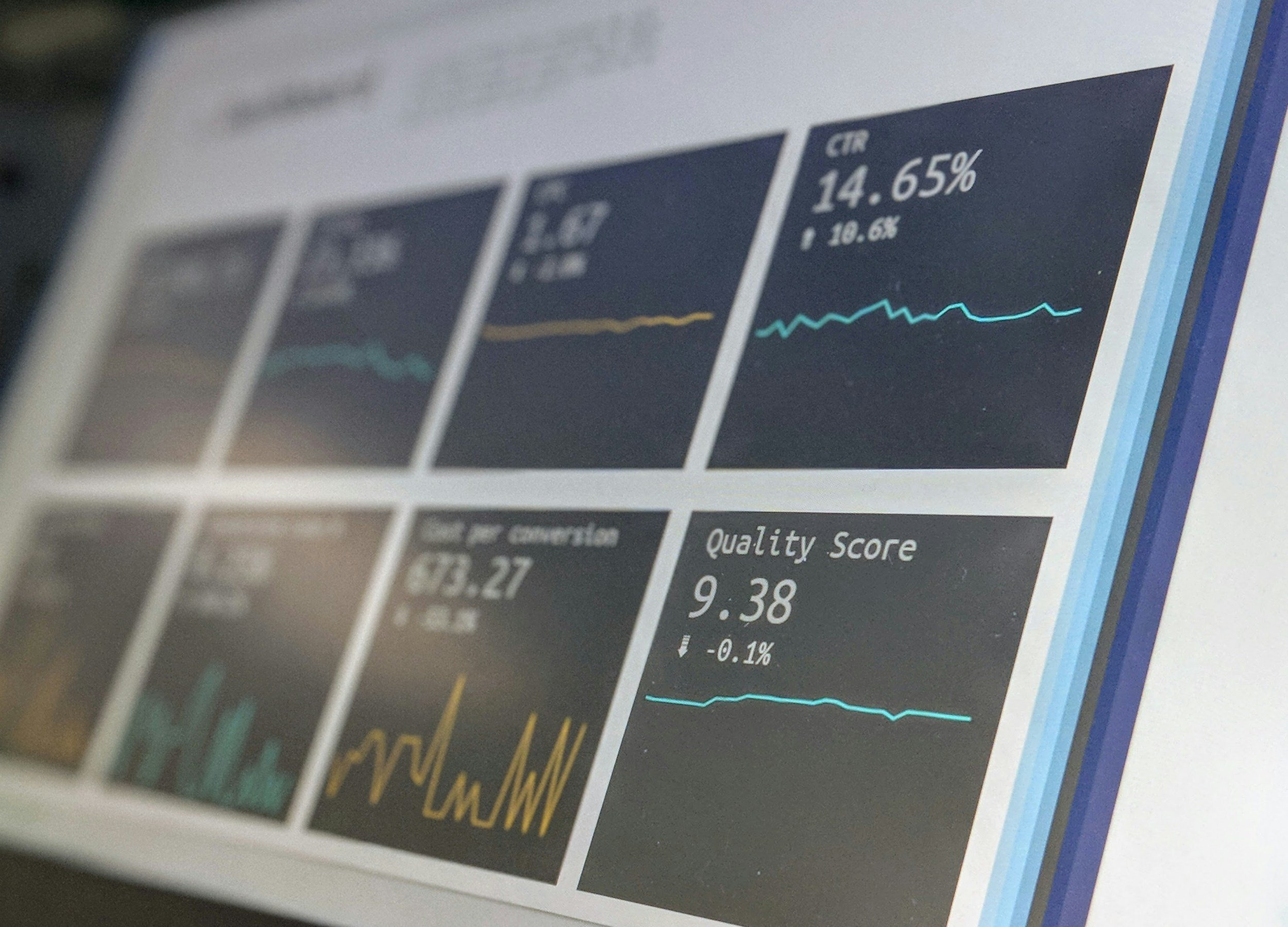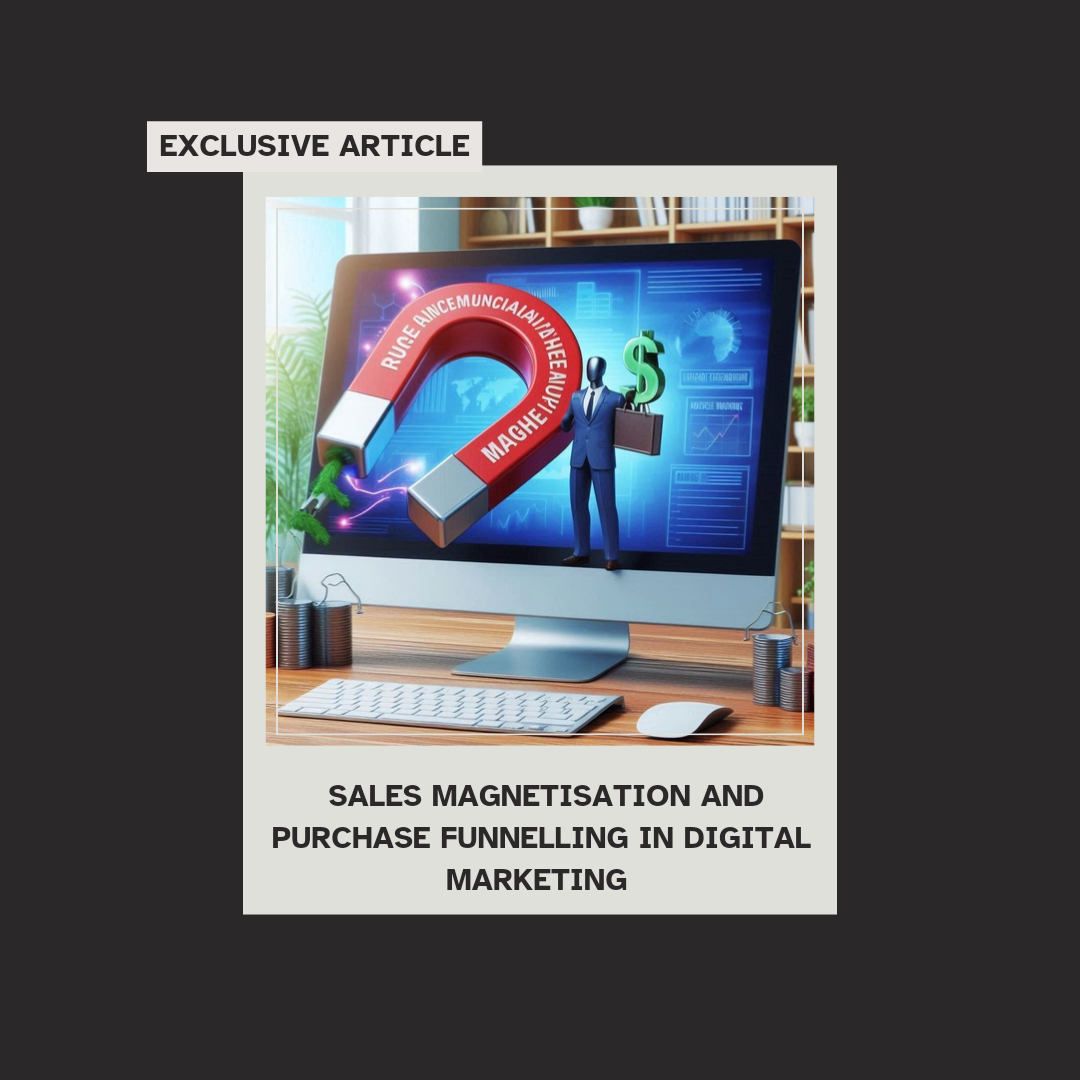Articles
Business and the Economy
EXCLUSIVE
ARTICLES
Make an impact today
Support my free content by contributing a donation.

The Market Analysis in Market Dynamics
Market analysis is a crucial element of understanding market dynamics, as it provides a comprehensive view of the competitive landscape, consumer behavior, and key trends affecting an industry. By systematically examining various factors such as market size, growth potential, and segmentation, businesses can identify opportunities and threats that could impact their strategic decisions.
A well-conducted market analysis begins with the assessment of current market conditions. This includes evaluating both macroeconomic indicators—such as GDP growth, inflation rates, and employment statistics—and microeconomic factors that pertain specifically to the industry, including supply chain logistics, pricing strategies, and consumer demand. By analyzing these elements, businesses can gauge the prevailing market sentiment and predict future movements.
Segmentation analysis also plays a pivotal role in market dynamics. By dividing the market into distinct groups based on demographics, buying behaviors, and preferences, organizations can tailor their products and marketing strategies to meet the specific needs of each segment. This targeted approach not only enhances customer satisfaction but also optimizes resource allocation and maximizes potential returns.
Understanding competitive forces is another critical aspect of market analysis. Insight into competitors’ strengths, weaknesses, market shares, and strategies allows businesses to position themselves effectively within the market. Tools such as SWOT analysis can be employed to assess internal capabilities against external market pressures, helping firms to establish a competitive edge.
Furthermore, market trends and consumer behaviors are continuously evolving. Regularly updating market analysis is essential for organizations to remain adaptable and responsive. This involves monitoring changes in technology, regulatory frameworks, and even cultural shifts that may influence buying patterns. By staying attuned to these dynamics, businesses can innovate and pivot their strategies accordingly, ensuring sustained growth and relevance in an ever-changing marketplace.
In summary, a thorough market analysis is an invaluable tool in navigating market dynamics, enabling businesses to make informed decisions and strategically position themselves for success.

How to Best Conduct Basic Competitive and Comparative Analysis
Conducting a competitive and comparative analysis is essential for businesses seeking to understand their position in the market and identify strategic opportunities. Here are key steps and considerations for effective execution:
Define Your Objectives and Scope
Start by clearly outlining what you wish to achieve with the analysis. Are you exploring new market entrants, enhancing product features, or seeking pricing strategies? Knowing your objectives will streamline your analysis and keep it focused.Identify Competitors
Develop a comprehensive list of direct and indirect competitors. Direct competitors offer similar products or services, while indirect competitors may solve the same customer problem through alternative means. Use industry reports, market research, and online tools to gather this information.Gather Data
Employ a variety of methods to collect data on your competitors. This can include:Website Analysis: Review their website for product offerings, pricing, and customer reviews.
Social Media Monitoring: Observe the engagement and strategies competitors use on platforms like Facebook, Instagram, and LinkedIn.
Customer Feedback: Assess reviews and testimonials on platforms like Google and industry-specific sites to understand customer sentiment.
Sales and Financial Reports: If available, analyze competitors’ financial performance to gauge their market position.
Perform SWOT Analysis
For each competitor, conduct a SWOT analysis (Strengths, Weaknesses, Opportunities, Threats). This helps in understanding where they excel and where they may be vulnerable, providing insights into potential market openings for your business.Benchmark Key Performance Indicators (KPIs)
Determine relevant KPIs for your analysis, such as market share, pricing strategies, customer acquisition costs, and customer satisfaction scores. Benchmark these metrics against your own performance to identify areas for improvement.Compare Offerings
Develop a comparison matrix to highlight differences and similarities in product features, pricing, and customer service. This visual representation can help in identifying unique selling propositions (USPs) and competitive advantages.Analyze Market Positioning
Assess how competitors position themselves in the market. Understand their branding, customer targeting, and messaging strategies. This will not only highlight competitive threats but also potential gaps in the market that your business can address.Synthesize Findings and Develop Strategic Recommendations
After analyzing the data, synthesize your findings into actionable insights. Recommend strategic responses based on the analysis, such as product development, repositioning, or marketing approaches to outpace competitors.
By systematically conducting competitive and comparative analysis, businesses not only gain critical insights into the competitive landscape but also equip themselves to make informed strategic decisions that can drive growth and enhance market positioning.

Leveraging Business Trends and Financial Forecasts
In today’s dynamic marketplace, leveraging business trends and financial forecasts has become essential for organizations aiming to secure a competitive edge. Understanding prevailing trends allows companies to anticipate shifts in consumer behavior, technological advancements, and industry standards, thereby enabling them to adapt proactively rather than reactively.
Financial forecasts play a critical role in this strategy. By analysing historical data and identifying emerging market indicators, businesses can project future performance, assess potential risks, and allocate resources more effectively. This proactive approach not only aids in budget planning but also informs strategic decision-making, allowing leaders to pivot quickly in response to changing conditions.
For instance, the rise of sustainable practices has fundamentally altered consumer expectations across various sectors. Companies that monitor such trends and incorporate sustainability into their value proposition not only enhance their brand reputation but also attract a growing segment of environmentally conscious buyers. Furthermore, robust financial forecasting can illuminate the viability of investing in green technologies or sustainable supply chains, minimising risk while capitalising on new opportunities.
Moreover, leveraging data analytics tools can significantly enhance the accuracy of both trend analysis and financial forecasting. By utilising real-time data, businesses can refine their strategies continually, ensuring that their initiatives are aligned with market demands and financial realities.
In conclusion, the synthesis of business trends and financial forecasts is not merely a strategic advantage; it is a prerequisite for long-term success in an ever-evolving economic landscape. Embracing this approach empowers businesses to
In today's dynamic marketplace, leveraging business trends and financial forecasts has become essential for organizations aiming to secure a competitive edge. Understanding prevailing trends allows companies to anticipate shifts in consumer behavior, technological advancements, and industry standards, thereby enabling them to adapt proactively rather than reactively.
Financial forecasts play a critical role in this strategy. By analyzing historical data and identifying emerging market indicators, businesses can project future performance, assess potential risks, and allocate resources more effectively. This proactive approach not only aids in budget planning but also informs strategic decision-making, allowing leaders to pivot quickly in response to changing conditions.
For instance, the rise of sustainable practices has fundamentally altered consumer expectations across various sectors. Companies that monitor such trends and incorporate sustainability into their value proposition not only enhance their brand reputation but also attract a growing segment of environmentally conscious buyers. Furthermore, robust financial forecasting can illuminate the viability of investing in green technologies or sustainable supply chains, minimizing risk while capitalizing on new opportunities.
Moreover, leveraging data analytics tools can significantly enhance the accuracy of both trend analysis and financial forecasting. By utilizing real-time data, businesses can refine their strategies continually, ensuring that their initiatives are aligned with market demands and financial realities.
In conclusion, the synthesis of business trends and financial forecasts is not merely a strategic advantage; it is a prerequisite for long-term success in an ever-evolving economic landscape. Embracing this approach empowers businesses to navigate uncertainties with greater agility, ultimately leading to sustainable growth and profitability.
Additional resource inside*

The Impact of Complex and Lengthy Customer Service on E-commerce Sales
In the fast-paced world of e-commerce, the efficiency and effectiveness of customer service play a critical role in shaping the overall customer experience. Complex and lengthy customer service processes can significantly hinder sales, as consumers increasingly value convenience and rapid resolution. When online shoppers encounter intricate procedures or extensive waiting times to resolve issues, their dissatisfaction can lead to abandoned carts, negative reviews, and ultimately, a decrease in repeat customers.
The impact of cumbersome customer service is compounded in an era where consumers have high expectations for instantaneous support. Modern shoppers are inclined to seek out brands that provide seamless communication channels and responsive service. If a system is perceived as convoluted, it not only frustrates customers but also communicates a lack of commitment to their needs. In contrast, an efficient customer service strategy can enhance customer loyalty and promote positive word-of-mouth, which are essential for sustained e-commerce growth.
Furthermore, when customer service interactions become a barrier rather than an aid, businesses risk losing prospective clients to competitors who prioritize simplicity and customer satisfaction. E-commerce platforms must recognize that investing in streamlined, user-friendly customer service systems is crucial in retaining customers and boosting overall sales. By leveraging technology such as AI-driven chatbots and comprehensive FAQs, businesses can foster a more intuitive customer experience and significantly mitigate the negative repercussions of complex
In the fast-paced world of e-commerce, the efficiency and effectiveness of customer service play a critical role in shaping the overall customer experience. Complex and lengthy customer service processes can significantly hinder sales, as consumers increasingly value convenience and rapid resolution. When online shoppers encounter intricate procedures or extensive waiting times to resolve issues, their dissatisfaction can lead to abandoned carts, negative reviews, and ultimately, a decrease in repeat customers.
The impact of cumbersome customer service is compounded in an era where consumers have high expectations for instantaneous support. Modern shoppers are inclined to seek out brands that provide seamless communication channels and responsive service. If a system is perceived as convoluted, it not only frustrates customers but also communicates a lack of commitment to their needs. In contrast, an efficient customer service strategy can enhance customer loyalty and promote positive word-of-mouth, which are essential for sustained e-commerce growth.
Furthermore, when customer service interactions become a barrier rather than an aid, businesses risk losing prospective clients to competitors who prioritize simplicity and customer satisfaction. E-commerce platforms must recognize that investing in streamlined, user-friendly customer service systems is crucial in retaining customers and boosting overall sales. By leveraging technology such as AI-driven chatbots and comprehensive FAQs, businesses can foster a more intuitive customer experience and significantly mitigate the negative repercussions of complex service processes.

How to Streamline and Improve Supply Chain Efficiency for Competitive Online Advantage
Streamlining and improving supply chain efficiency is crucial for businesses looking to gain a competitive edge in the online marketplace. Here are key strategies to enhance your supply chain operations:
Embrace Technology and Automation: Investing in advanced technologies such as Artificial Intelligence (AI), Internet of Things (IoT), and machine learning can significantly improve supply chain efficiencies. These technologies enable real-time tracking of inventory, predictive analytics for demand forecasting, and automation of repetitive tasks, thereby reducing lead times and operational costs.
Optimize Inventory Management: Implementing just-in-time (JIT) inventory systems can minimize excess stock and reduce holding costs. Combine this with robust data analytics to predict demand more accurately, ensuring that you have the right amount of stock when needed, thus avoiding stock0outs or overstock situations.
Strengthen Supplier Relationships: Developing strong relationships with suppliers can lead to better communication, collaboration, and flexibility. Establishing clear expectations, sharing demand forecasts, and engaging in joint planning can enhance responsiveness and improve overall supply chain performance.
Streamline Logistics and Distribution: Evaluate your logistics network to identify inefficiencies. Consolidating shipments, choosing the most efficient shipping routes, and exploring third-party logistics (3PL) providers can lead to reduced transit times and lower costs. Additionally, adopting an omnichannel distribution strategy allows for more efficient fulfilment of online orders.
Focus on Sustainability: Incorporating sustainable practices within your supply chain can appeal to environmentally conscious consumers. This might involve choosing eco-friendly packaging, reducing waste, and optimizing transportation methods to lower carbon footprints. A sustainable supply chain can also enhance brand loyalty and differentiate your business in a crowded marketplace.
Continuous Improvement Culture: Foster a culture of continuous improvement by regularly reviewing and analyzing supply chain processes. Embrace methodologies like Lean and Six Sigma to identify areas for improvement, eliminate waste, and enhance operational efficiency. Engaging employees at all levels in this process can lead to innovative solutions and a more agile supply chain.
By implementing these strategies, businesses can create a more efficient and responsive supply chain, ultimately leading to enhanced customer satisfaction
Streamlining and improving supply chain efficiency is crucial for businesses looking to gain a competitive edge in the online marketplace. Here are key strategies to enhance your supply chain operations:
Embrace Technology and Automation: Investing in advanced technologies such as Artificial Intelligence (AI), Internet of Things (IoT), and machine learning can significantly improve supply chain efficiencies. These technologies enable real-time tracking of inventory, predictive analytics for demand forecasting, and automation of repetitive tasks, thereby reducing lead times and operational costs.
Optimize Inventory Management: Implementing just-in-time (JIT) inventory systems can minimize excess stock and reduce holding costs. Combine this with robust data analytics to predict demand more accurately, ensuring that you have the right amount of stock when needed, thus avoiding stock-outs or overstock situations.
Strengthen Supplier Relationships: Developing strong relationships with suppliers can lead to better communication, collaboration, and flexibility. Establishing clear expectations, sharing demand forecasts, and engaging in joint planning can enhance responsiveness and improve overall supply chain performance.
Streamline Logistics and Distribution: Evaluate your logistics network to identify inefficiencies. Consolidating shipments, choosing the most efficient shipping routes, and exploring third-party logistics (3PL) providers can lead to reduced transit times and lower costs. Additionally, adopting an omnichannel distribution strategy allows for more efficient fulfilment of online orders.
Focus on Sustainability: Incorporating sustainable practices within your supply chain can appeal to environmentally conscious consumers. This might involve choosing eco-friendly packaging, reducing waste, and optimizing transportation methods to lower carbon footprints. A sustainable supply chain can also enhance brand loyalty and differentiate your business in a crowded marketplace.
Continuous Improvement Culture: Foster a culture of continuous improvement by regularly reviewing and analyzing supply chain processes. Embrace methodologies like Lean and Six Sigma to identify areas for improvement, eliminate waste, and enhance operational efficiency. Engaging employees at all levels in this process can lead to innovative solutions and a more agile supply chain.
By implementing these strategies, businesses can create a more efficient and responsive supply chain, ultimately leading to enhanced customer satisfaction and a significant competitive advantage in the online marketplace.

Modern Lead Magnets, Product Discrepancy and Perfect Pricing Completion: Part 1
In today's competitive marketing landscape, understanding the dynamics of modern lead magnets, product discrepancies, and perfect pricing completion part 1 is essential for businesses aiming to enhance customer acquisition and retention.
Modern Lead Magnets
Lead magnets have evolved significantly from the traditional eBooks and whitepapers. Today's lead magnets encompass a diverse range of offerings, such as interactive webinars, free trials, and exclusive access to premium content. The key to an effective lead magnet lies in its ability to provide immediate value while aligning closely with the target audience’s pain points. By leveraging insights from customer behaviour and preferences, businesses can craft lead magnets that not only capture attention but also facilitate a seamless transition into the sales funnel.
Product Discrepancy
Product discrepancy refers to the gap between customer expectations and the actual product experience. This discrepancy can manifest in various forms, including differences in perceived value, quality, and functionality. In an era where consumers are more informed and vocal than ever, businesses must ensure that their offerings consistently meet or exceed expectations. Addressing product discrepancies involves thorough market research, ongoing customer feedback loops, and committing to continuous improvement. Companies that proactively manage this aspect can enhance customer satisfaction, foster brand loyalty, and reduce churn rates.
Perfect Pricing Completion
Achieving perfect pricing completion is about finding the optimal price point that reflects the product’s value while remaining competitive. This involves a comprehensive analysis of market trends, customer willingness to pay, and the perceived value of the product. Businesses need to adopt a dynamic pricing strategy that allows for adjustments based on market feedback and changing consumer sentiment. Additionally, effective communication of pricing benefits can help mitigate potential hesitations from customers, reinforcing the value offered. By perfectly aligning the pricing strategy with customer expectations and market dynamics, businesses can optimise conversions and drive revenue growth.
In conclusion, integrating these elements—modern lead magnets, diligent management of product discrepancies, and perfect pricing completion—will empower businesses to create a compelling value proposition in an ever-evolving marketplace.

Impacts of Reduced Purchasing Power and Delayed Discretionary Spending
Reduced purchasing power and delayed discretionary spending have profound implications for both consumers and businesses alike. When individuals experience a decline in their real income—due to rising costs of living, inflation, or economic uncertainty—they are often forced to prioritise essential purchases over non-essential items. This shift leads to a contraction in overall consumer spending, which is a critical driver of economic growth.
For businesses, the consequences of this behaviour can be significant. Retailers may see a drop in sales of luxury and discretionary products as consumers tighten their belts, opting instead for lower-priced alternatives or delaying purchases altogether. This not only affects revenue but also impacts inventory management, marketing strategies, and overall brand positioning. Companies may need to adapt their offerings, focusing on value-driven promotions or essential goods to maintain market share during tougher economic times.
In addition, delayed discretionary spending can create a ripple effect across various sectors. Service industries, particularly hospitality and entertainment, may face heightened challenges as consumers resist spending on experiences that they perceive as non-essential. As foot traffic declines, businesses may need to rethink their operational models, potentially leading to cost-cutting measures, workforce reductions, or even closures.
Moreover, the psychological aspect of reduced purchasing power cannot be overlooked. Consumer confidence tends to wane in times of economic strain, driving a more cautious approach to spending. This fear-based behaviour further exacerbates the challenge by creating a cycle of reduced demand that can hinder recovery efforts.
Overall, the interplay between reduced purchasing power and delayed discretionary spending highlights the critical need for businesses to remain agile and responsive to shifting consumer behaviours. In an environment marked by uncertainty, understanding these dynamics becomes essential for sustainable growth and long-term success.

Price Elasticity and Marginal Utility of an Online Downloadable Product
When assessing the market dynamics of online downloadable products, understanding price elasticity and marginal utility becomes essential for strategic decision-making. Price elasticity measures how sensitive the quantity demanded of a product is to a change in its price. In the realm of digital goods, this sensitivity can vary significantly based on various factors such as the product type, target demographic, and market competition.
For instance, consider an online course that teaches advanced software skills. If the price of this course is increased by 10%, and the demand decreases by 15%, the price elasticity of demand can be calculated at -1.5, indicating that the course is elastic. This suggests that consumers exhibit a high sensitivity to price changes, potentially due to the presence of alternative educational resources that provide similar value. Conversely, if the product is a unique e-book with a niche audience, a similar price increase may result in only a 5% decrease in demand, reflecting inelastic behaviour with a price elasticity of -0.5.
Marginal utility, on the other hand, refers to the additional satisfaction or value derived from consuming one more unit of a product. In the context of downloadable products, the marginal utility can be influenced by factors like the perceived value of content, exclusivity, and the user's previous experiences. For instance, as a consumer downloads additional courses or e-books, their marginal utility may diminish if they feel they are receiving less novel information or if the content fails to meet their evolving needs.
Pricing strategy must therefore take into account both the price elasticity and perceived marginal utility. A product priced beyond the optimal threshold may not only decrease demand but also reduce the overall consumer satisfaction derived from additional units. Consequently, businesses must carefully analyse customer behaviour and feedback to determine the best pricing strategy that maximises revenue while maintaining a high level of consumer utility.
In conclusion, by thoroughly understanding the interplay between price elasticity and marginal utility, businesses can better navigate the competitive landscape of online downloadable products, allowing them to set prices that not only attract customers but also optimise profitability.

